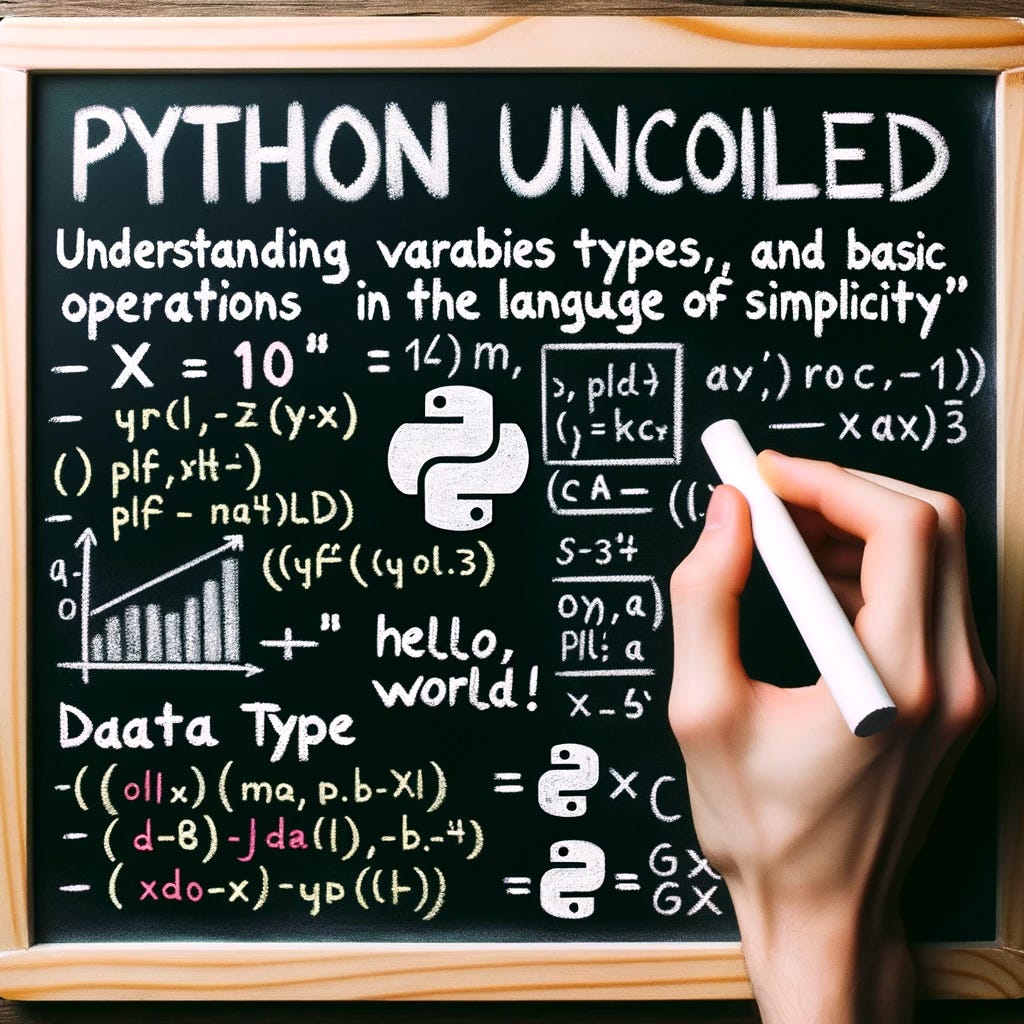Python Uncoiled:
Understanding Variables, Data Types, and Basic Operations in the Language of Simplicity
As we delve into the realm of programming languages, Python remarkably stands out due to its sophisticated yet straightforward design. Introduced to the digital world by Guido van Rossum in 1991, Python's ascent to prominence is attributed to its emphasis on readability and efficiency, offering a gentler learning curve for novices and an effective framework for system design for seasoned developers.
The Concept of Variables in Python
In any programming language, the essence of variables is central. Variables act as placeholders for data values; they are the cornerstone of programming, allowing for the storage and manipulation of data in a dynamic, flexible manner. Python embraces this concept wholeheartedly, providing a simple syntax for variable usage.
Consider this elementary illustration:
x = 10
In this instance, x functions as a variable, acting as a stand-in for the integer 10. What this implies is that the name x now represents the value 10 within the program's context, allowing for its manipulation and retrieval.
Python's Rich Tapestry of Data Types
Python, like the artist's palette, has various hues representing different data types:
Integers: These represent whole, complete numbers, devoid of fractional components (e.g.,
2,42,0).Floats: These depict numbers inclusive of decimals (e.g.,
3.14,0.99).Strings: These are sequences of characters enclosed in quotes, allowing for textual representation (e.g.,
"Greetings",'Pythonic Way').Booleans: These are the simplest form of data representation, indicating a
TrueorFalsestate.
The type() function is a built-in utility in Python that reveals the type of data encapsulated within a variable:
print(type(10)) # Reveals: <class 'int'>
print(type(4.5)) # Reveals: <class 'float'>
print(type("World")) # Reveals: <class 'str'>
print(type(False)) # Reveals: <class 'bool'>
Practical Coding in Python: The Classical Greeting and Arithmetic Basics
No introductory programming course is complete without crafting the time-honored "Hello, World!" script. It's a simple demonstration of Python's print() function:
print("Hello, World!")
Executing this script initiates a display with the friendly greeting, "Hello, World!"
Python is also adept at performing arithmetic calculations - a foundational aspect of computational tasks. Below, we observe the language's capability to handle basic mathematical operations:
a = 10
b = 5
sum_result = a + b
diff_result = a - b
prod_result = a * b
div_result = a / b
print("Sum:", sum_result)
print("Difference:", diff_result)
print("Product:", prod_result)
print("Division:", div_result)
Output from this script distinctly shows the computations' results:
Sum: 15
Difference: 5
Product: 50
Division: 2.0
Concluding Thoughts
With these foundational elements of Python, you, as burgeoning programmers, have embarked on a monumental journey. The path of Python programming is replete with the elegance of simplicity and the power of functionality. It is imperative to continually engage with these fundamental concepts, as they form the bedrock upon which more complex applications are constructed. Practice and perseverance are the keys to unlocking the vast potential that Python holds.


